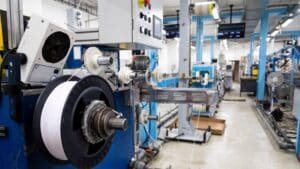
Five decades have come and gone since humanity’s historic lunar stroll, but our celestial neighbor beckons once again. NASA’s Artemis Program, a bold rekindling of lunar exploration, is now in full swing with the audacious aim of landing the first crewed mission on the lunar surface around 2025. However, this time around, NASA’s lunar aspirations go beyond a mere visit. They envision a sustained lunar presence, complete with a lunar space station and surface operations. But that’s not all; NASA has unveiled plans for lunar residences and has entered into a pioneering partnership with Icon, a company with an innovative twist to make lunar living a reality. If all goes according to plan, lunar homesteads could emerge within our lifetimes.
This visionary undertaking goes by the name of Project Olympus, and its fruition could come to pass as early as 2040. Icon, the creative force behind this lunar living concept, is already in the throes of developing technology that promises to revolutionize the construction industry. Their approach? Utilizing 3D printing to craft homes on Earth faster and more sustainably than conventional methods. NASA’s vision here harmonizes with their broader philosophy of in-situ resource utilization (ISRU), the concept of leveraging materials found at your destination rather than lugging everything from home.
The maiden step in this lunar odyssey is to transport a substantial 3D printer to the lunar surface. While Icon’s printers have thrived on Earth, the lunar environment presents a whole new set of challenges. Most space-bound hardware is meticulously engineered to endure the harsh rigors of space, from radiation to extreme temperature fluctuations. Early next year, NASA will place Icon’s printer in a specialized chamber at the Marshall Space Flight Center, simulating the lunar radiation and vacuum conditions the printer will face.
The NASA-Icon partnership traces its roots back to 2020 when NASA began funding research into construction methods beyond low-Earth orbit. In 2022, NASA took a significant leap forward by awarding a $60 million contract for a space construction system capable of erecting lunar habitats and rocket landing pads. However, the true surprise in NASA’s ever-evolving lunar plans is the inclusion of civilian housing in Project Olympus, marking a thrilling new chapter in humanity’s lunar adventure.

Icon’s ambitious plan hinges on utilizing lunar soil as the foundation for its 3D printing endeavors. However, the viability and long-term durability of such a material remain an open question. The Moon’s dust, known for its extreme abrasiveness, poses a concern that construction materials might inadvertently damage the 3D printer and other vital hardware. To address these uncertainties, NASA has taken the proactive step of investing in research well in advance. With nearly two decades before Project Olympus is anticipated to bear fruit in 2040, NASA aims to iron out the wrinkles and ensure the project’s success.
Before breaking ground, so to speak, on the Moon’s first lunar residence, there will be a series of lunar tests, a logical prerequisite in this lunar saga. These tests will follow the progression of the Artemis Program, which has already witnessed the launch of Artemis I—a historic uncrewed lunar flyby and the maiden voyage of the Space Launch System. Artemis II, featuring a crewed lunar flyby, is poised for liftoff as early as next year, paving the way for the culminating moment: Artemis III’s first crewed landing. Subsequently, NASA will need to establish lunar landing pads to accommodate the equipment, including the 3D printers. The SpaceX Starship, still in development, emerges as a prospective candidate for transporting the essential lunar equipment. All of these steps are expected to unfold over the course of several years, so for those contemplating a lunar abode, it’s advisable to keep your earthly residence for the time being.
Check out Icon’s site all about the project and how they plan to actually build this! Hey NASA, if you need some extra filament we can hook you up!




